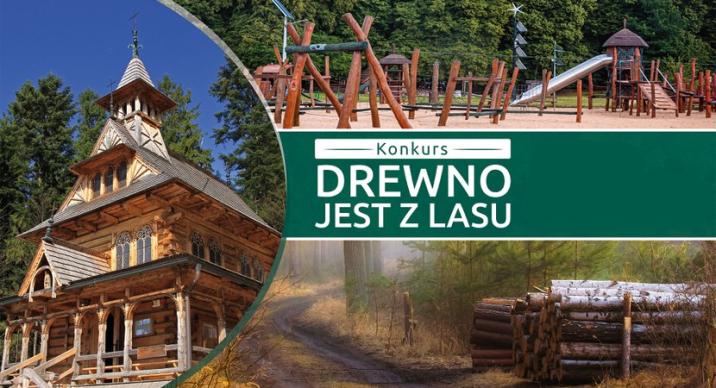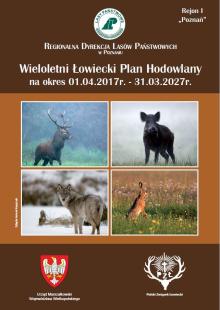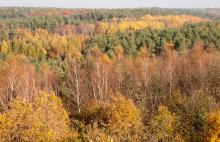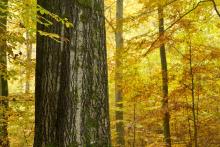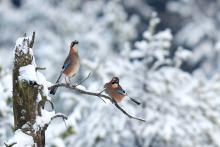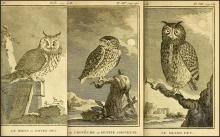 Asset Publisher
Asset Publisher
Polish forests
Poland is in the European lead, while concerning the area of all forests. They cover about 29,2 % of the country territory, and grow within the area of 9,1 million hectares. The overwhelming majority of the forests is state owned, of which almost 7,6 million hectares are managed by the State Forests National Forest Holding..
The number of Polish forest is still growing. The forestation rate of the country has increased from 21 % in 1945 to 29,2 % at the moment. Between 1995 and 2008, the forest area increased by 310 thousand ha. The basis for afforestation works is the "National Programme for Increasing the Forest Cover" (KPZL), assuming an increase of the forestation rate up to 30 % by 2020 and up to 33 % by 2050. Polish forests abound in flora, fauna and fungi. 65 % of the total number of animal species live there.
The forests grow in our country on poor soils, mainly because of the development of the agriculture in previous years. It influences the distribution of the types of the forest sites in Poland. Over 55 % of the forest areas is covered with coniferous forests. In other areas, there are forest sites, mainly the mixed ones. Their small part constitute alder and riparian forests – not more than 3 %.
In the years 1945 – 2011 the area of natural deciduous tree stands within the area of the State Forests National Forest Holding increased from 13 to 28,2 %.
Within the lowlands and uplands the most often occurring tee species is pine. It covers 64,3 % of the forest area of the State Forests National Forest Holding and 57,7 % of private and commune forests. In the mountains the predominant species is European spruce ( in the west) and European spruce with beech (in the east). Domination of pine is the result of carrying on sustainable forest management in the past. Once, the monocultures (crops or cultivations of one species) were the answer to the great demand of industry for wood. Such forests appeared to be quite fragile to climatic factors. They also were often the prey of pests' expansion.
In Polish forests, the share of other tree species, especially deciduous trees have been systematically increasing. The foresters have stepped aside from monocultures – that is why, they try to fit specific species of the forest stand to the natural stand, that would be proper for the given area. Thanks to that, in the years 1945 – 2011, the area of the deciduous tree stands within the lands of the State Forests National Forest Holding increased from 13 to 28,2 %. There occur more and more frequently the following tree species: oaks, ashes, maples, sycamore maples, elms, but also birches, beeches, alders, poplars, hornbeams, aspens, tilias and willows.
Our forests are the most often represented by the forest stands aged 40 to 80 years. The average age of the forest equals 60 years. More and more trees are of big size at the age over 80 years. Since the end of the Second World War, the forests' area has increased up to almost 1,85 million hectares.
Raport o stanie lasów w Polsce 2012
 Asset Publisher
Asset Publisher
Konkurs „Drewno jest z lasu”
Konkurs „Drewno jest z lasu”
Drewno – niezwykły surowiec i synonim ekologicznego stylu życia. Materiał, z którego zostały wykonane najcenniejsze polskie zabytki i obiekty kultu. Tworzywo dla artystów i rzemieślników. Lasy Państwowe ogłaszają konkurs, który zwraca uwagę na leśne pochodzenie drewna.
Ołtarz Witta Stwosza, małopolskie kościoły UNESCO czy częstochowska ikona Matki Bożej – to najcenniejsze zabytki polskiej kultury i fundament narodowego dziedzictwa. Wszystkie powstały z udziałem drewna. Takich przykładów cennej architektury i dzieł sztuki wykonanych z drewna mamy w Polsce wyjątkowo dużo. Ale drewno jest też surowcem wykorzystywanym w budowie całkowicie współczesnych obiektów. Projekty, które przy okazji konserwacji tego typu obiektów lub powstawania nowych konstrukcji będą promowały drewno mają szansę na wsparcie Lasów Państwowych.
Konkurs „Drewno jest z lasu” ma na celu promowanie drewna i Lasów Państwowych jako głównego dostawcę tego surowca. Nośnikiem gospodarczej funkcji lasu i polskiego modelu trwale zrównoważonej gospodarki leśnej będą obiekty architektury drewnianej.
Udział w konkursie mogą wziąć organizacje pozarządowe, samodzielne publiczne zakłady opieki zdrowotnej, samorządy i ich jednostki organizacyjne. Adresatem przedsięwzięcia są też parafie i osoby prawne kościołów i innych związków wyznaniowych działające legalnie na terenie Polski.
Podmioty chętne, by wziąć udział w konkursie powinny przygotować i złożyć projekt, który oceni komisja konkursowa. Gdy projekt zyska akceptację, wnioskodawca podpisze umowę z Centrum Informacyjnym Lasów Państwowych, a po wywiązaniu się z zadeklarowanego zadania, uzyska dofinansowanie.
Wnioski w konkursie można przesyłać na adres: konkurs.drewno@cilp.lasy.gov.pl do końca sierpnia, a realizację zadań, które zostaną objęte umową z CILP należy zakończyć do listopada br. Jako projekt zadania konkursowego należy rozumieć oryginalny sposób promocji drewna i leśnictwa odbywający się przy okazji prac konserwatorskich czy wykonywania inwestycji, nie zaś sam techniczny projekt inwestycji.
„Drewno jest z lasu” to trzeci w tym roku program konkursowy Lasów Państwowych. Równolegle trwają konkursy grantowe dedykowane kołom gospodyń wiejskich i klubom sportowym.


 fot. Paweł Fabijański
fot. Paweł Fabijański
 fot. Paweł Fabijański
fot. Paweł Fabijański
 fot. Paweł Fabijański
fot. Paweł Fabijański

